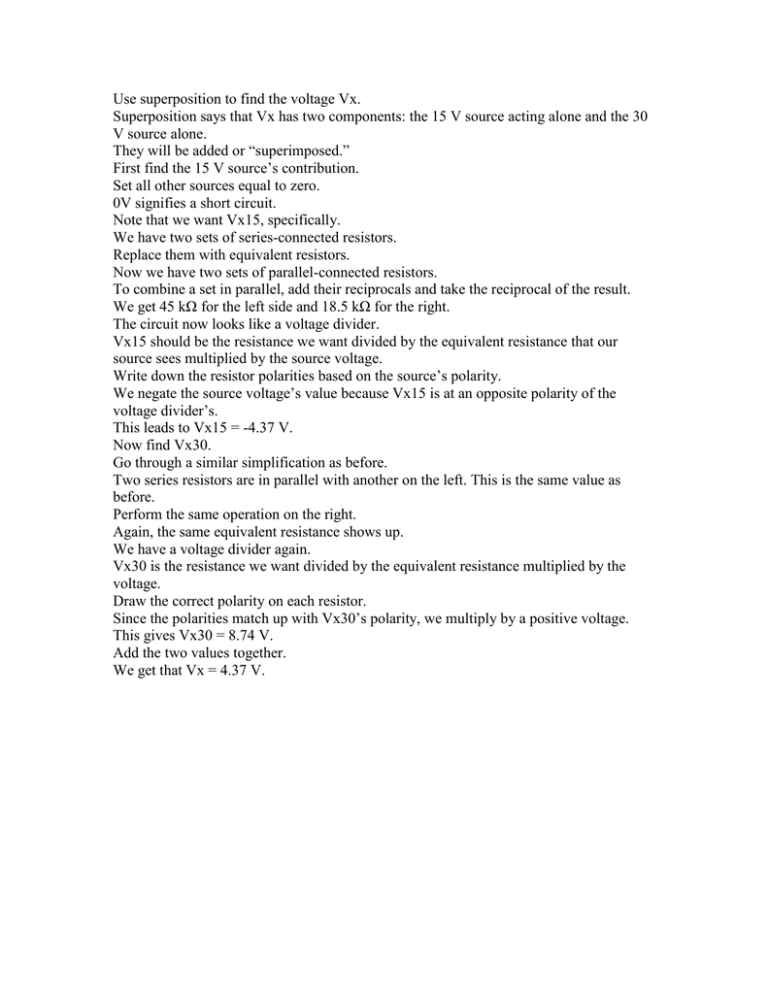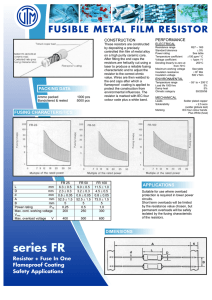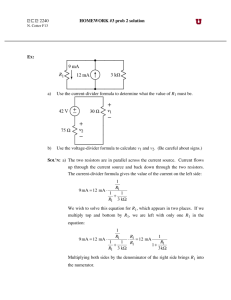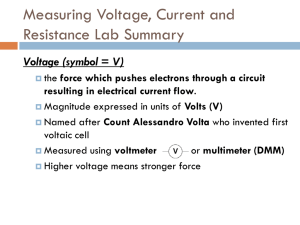Use superposition to find the voltage Vx.
advertisement

Use superposition to find the voltage Vx. Superposition says that Vx has two components: the 15 V source acting alone and the 30 V source alone. They will be added or “superimposed.” First find the 15 V source’s contribution. Set all other sources equal to zero. 0V signifies a short circuit. Note that we want Vx15, specifically. We have two sets of series-connected resistors. Replace them with equivalent resistors. Now we have two sets of parallel-connected resistors. To combine a set in parallel, add their reciprocals and take the reciprocal of the result. We get 45 kΩ for the left side and 18.5 kΩ for the right. The circuit now looks like a voltage divider. Vx15 should be the resistance we want divided by the equivalent resistance that our source sees multiplied by the source voltage. Write down the resistor polarities based on the source’s polarity. We negate the source voltage’s value because Vx15 is at an opposite polarity of the voltage divider’s. This leads to Vx15 = -4.37 V. Now find Vx30. Go through a similar simplification as before. Two series resistors are in parallel with another on the left. This is the same value as before. Perform the same operation on the right. Again, the same equivalent resistance shows up. We have a voltage divider again. Vx30 is the resistance we want divided by the equivalent resistance multiplied by the voltage. Draw the correct polarity on each resistor. Since the polarities match up with Vx30’s polarity, we multiply by a positive voltage. This gives Vx30 = 8.74 V. Add the two values together. We get that Vx = 4.37 V.








